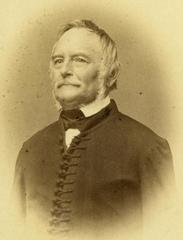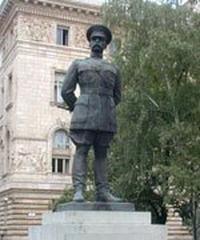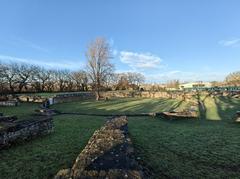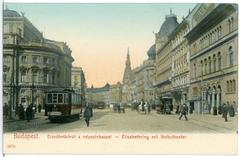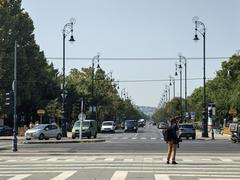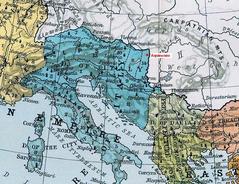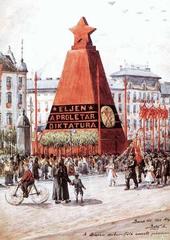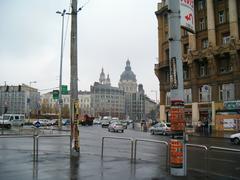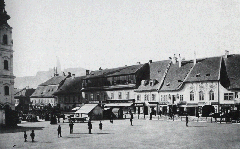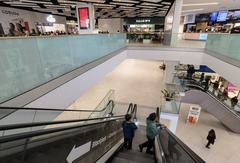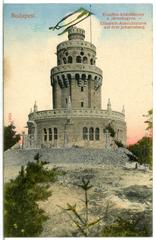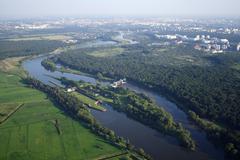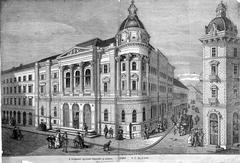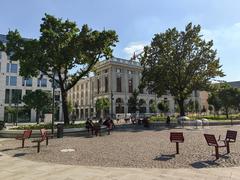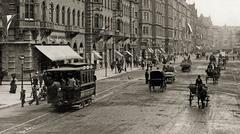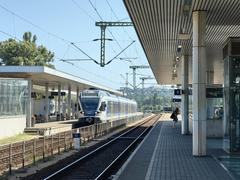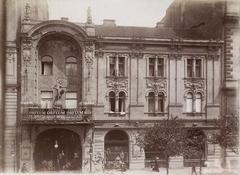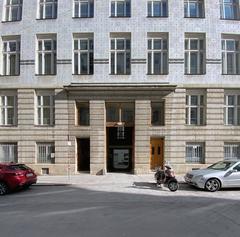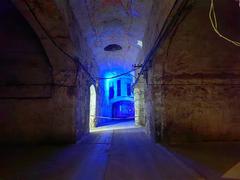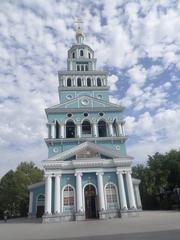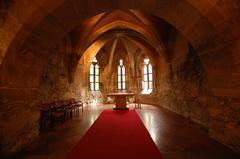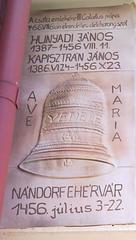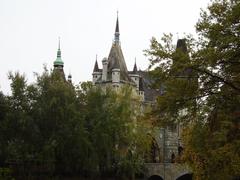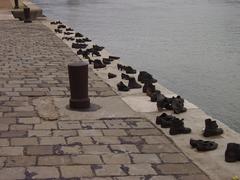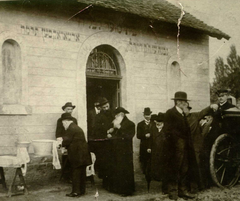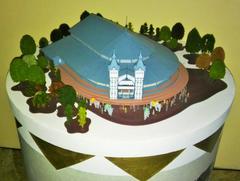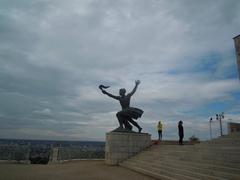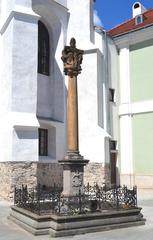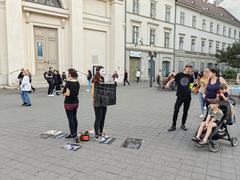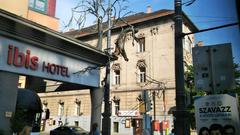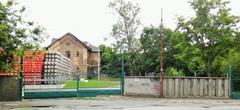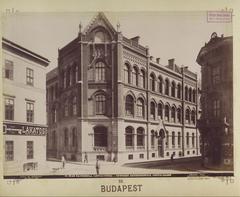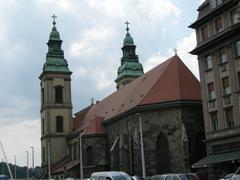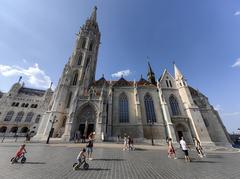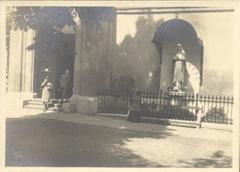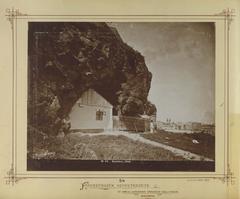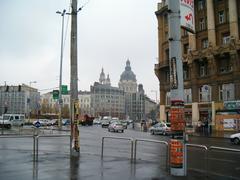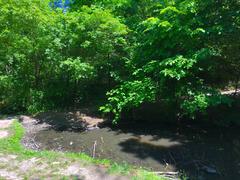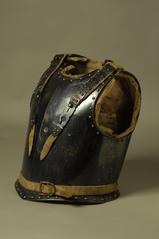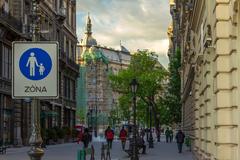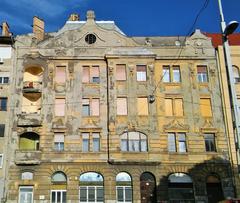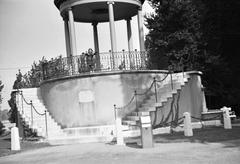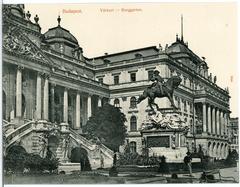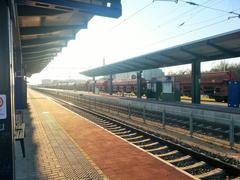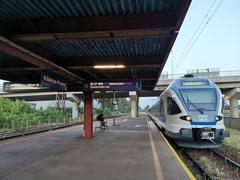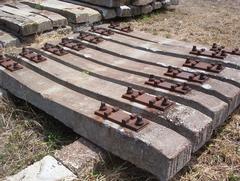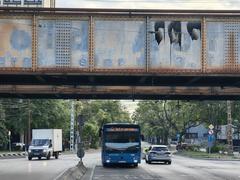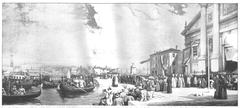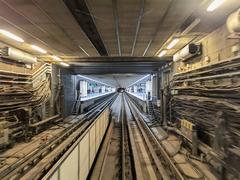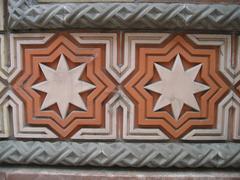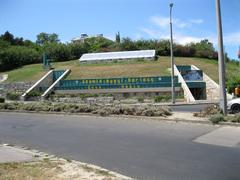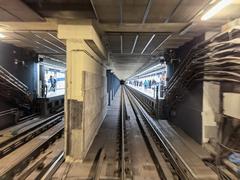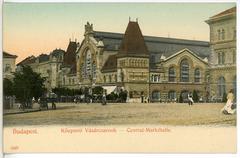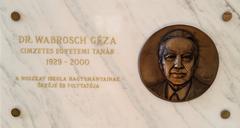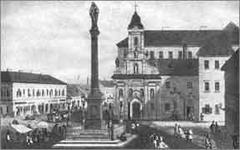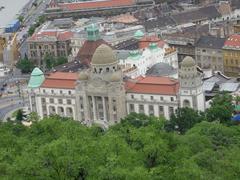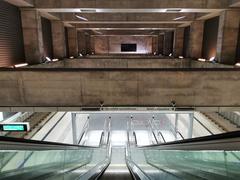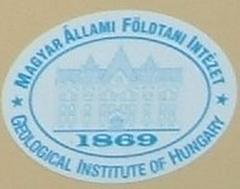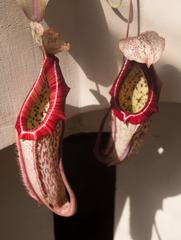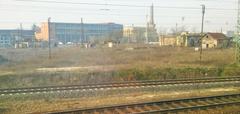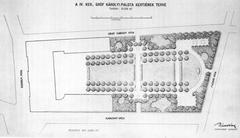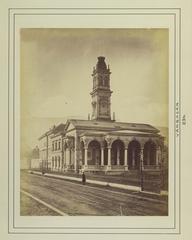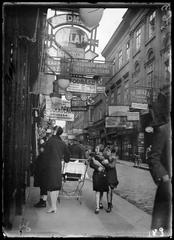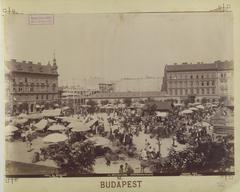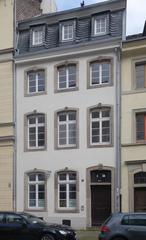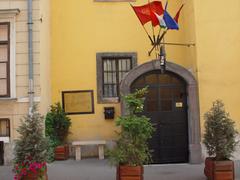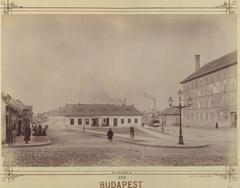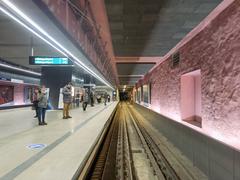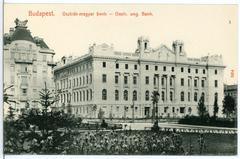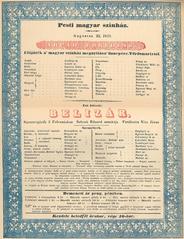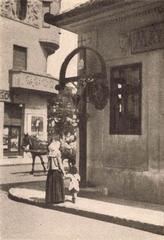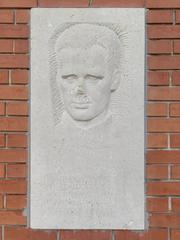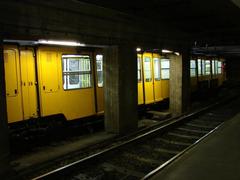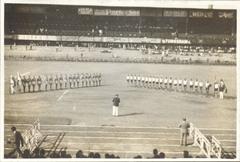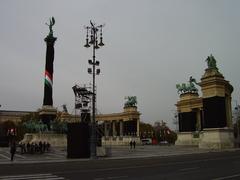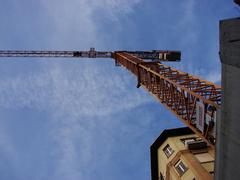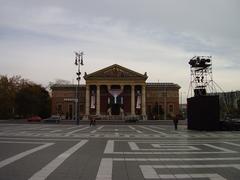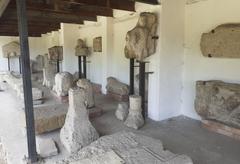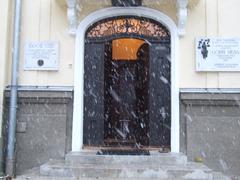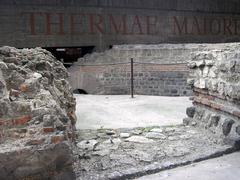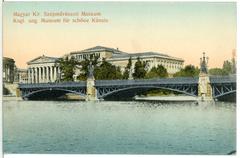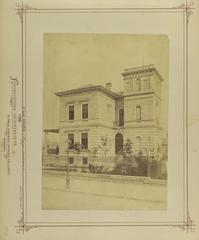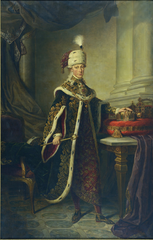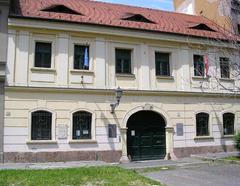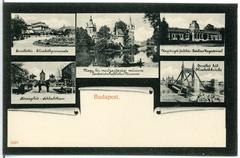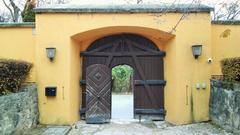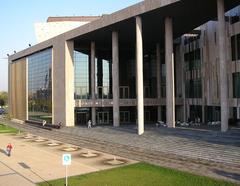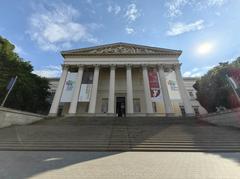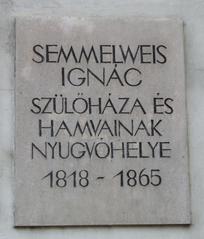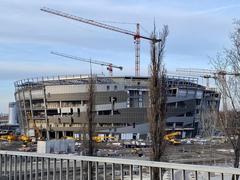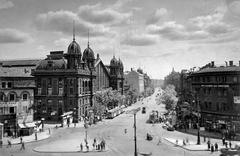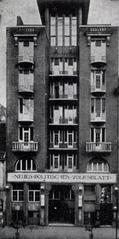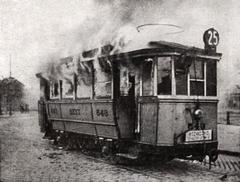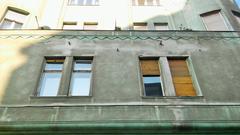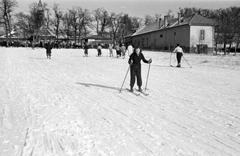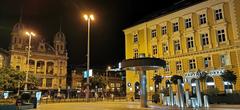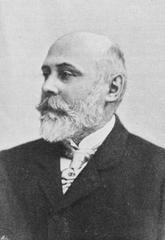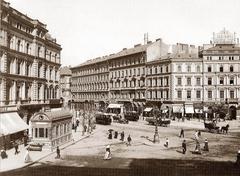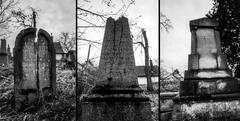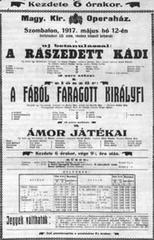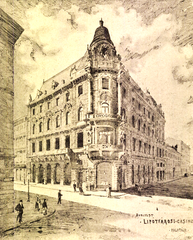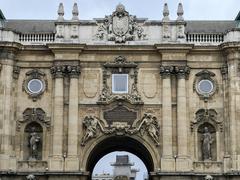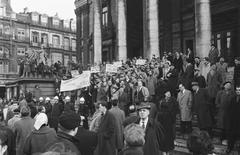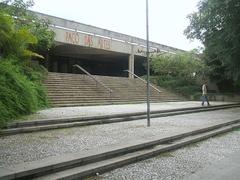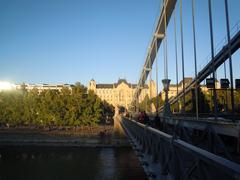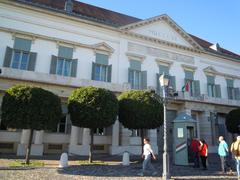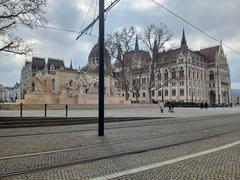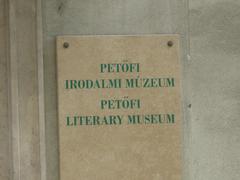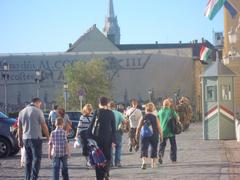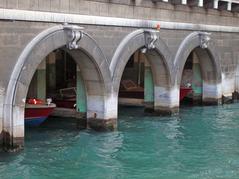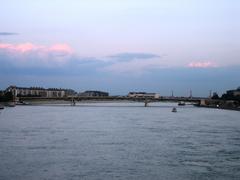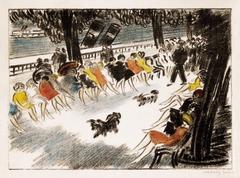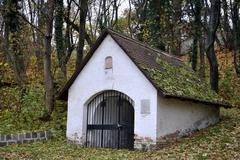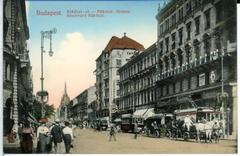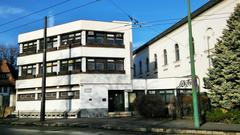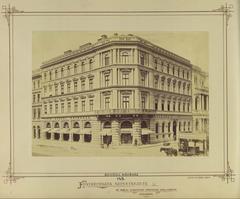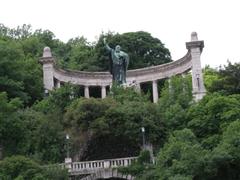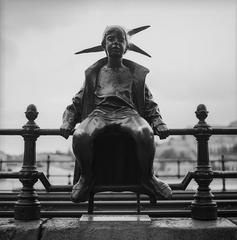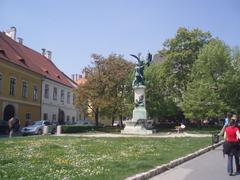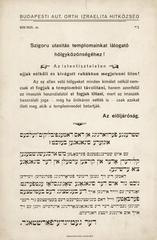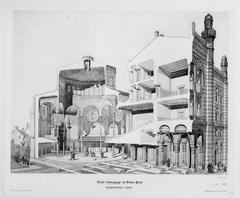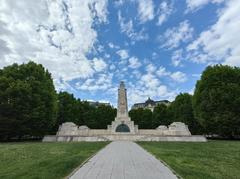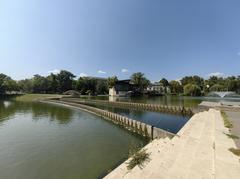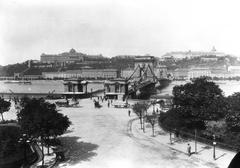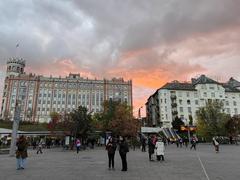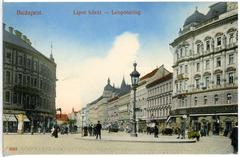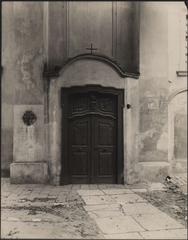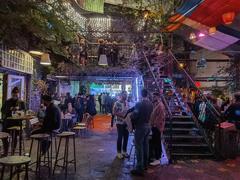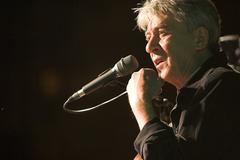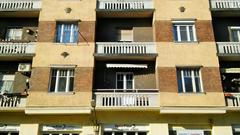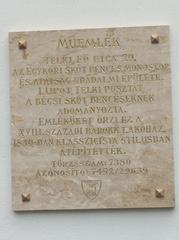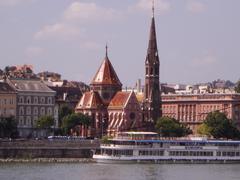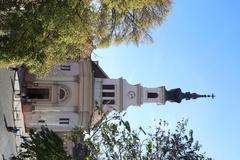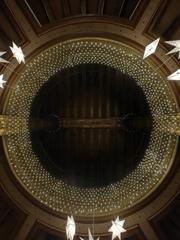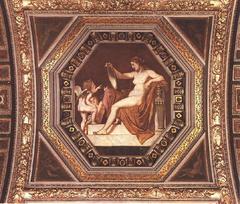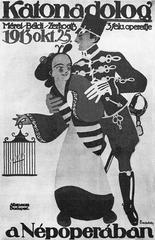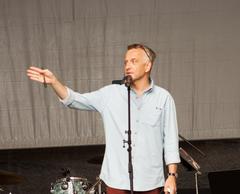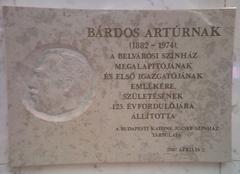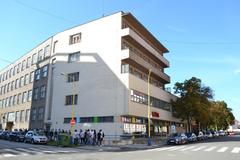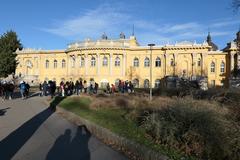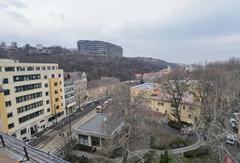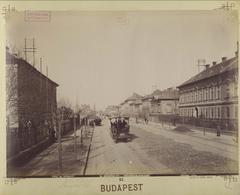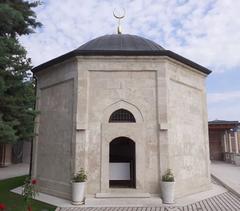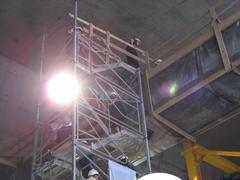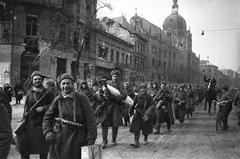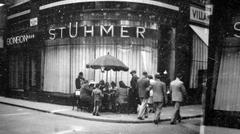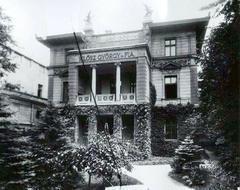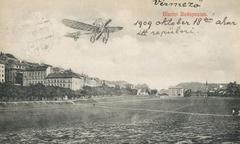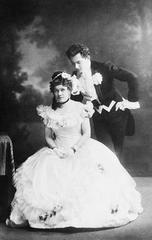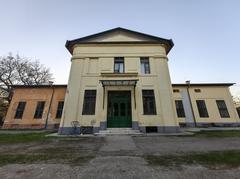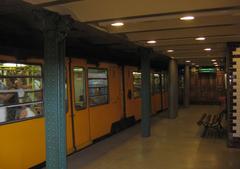H1: Guide Complet pour Visiter la Synagogue de la Place Teleki, Budapest, Hongrie
Date : 03/07/2025
Introduction
Nichée dans le 8ème arrondissement historique de Budapest, Józsefváros, the Synagogue of Teleki Square offers a unique and intimate glimpse into the city’s rich Jewish heritage, beyond the more famous 7th District Jewish Quarter. Often described as a “hidden gem,” this modest yet enduring synagogue – also known as the Teleki Tér Synagogue or Chortkover Kloyz – stands as a living testament to over a century of Jewish life, faith, and resilience in Budapest. Founded in the early 20th century by Hasidic Jews from Galicia, the synagogue uniquely occupies ground-floor apartments within a residential building, reflecting the tradition of “apartment synagogues” or shtiebels that once flourished in the area (Tablet Magazine; Dayton Jewish Observer).
Unlike the grand Dohány Street Synagogue in Budapest’s 7th District, the Teleki Square Synagogue offers an intimate atmosphere enriched by its wooden Ark brought from Galicia, traditional Hasidic Sephardic prayer rites, and a history intertwined with the struggles and triumphs of Budapest’s Jewish community through the Holocaust, Communist repression, and cultural revival (Christian Science Monitor). Visitors today can explore not only its historical and architectural significance but also participate in ongoing religious services, cultural events, and guided tours that illuminate the synagogue’s role as a vibrant community hub.
This comprehensive guide aims to provide potential visitors with detailed information on Synagogue of Teleki Square visiting hours, ticketing, accessibility, and etiquette, while also situating the synagogue within the broader context of Budapest’s Jewish history and cultural landscape. Whether you are a history enthusiast, cultural traveler, or someone seeking to deepen your understanding of Jewish heritage in Hungary, this report offers valuable insights and practical tips to enrich your visit (Budapestbylocals; Tablet Magazine).
Contents
- Introduction to Teleki Square Synagogue and its significance
- Historical background and cultural context
- Architectural and religious features
- Visitor information: hours, tickets, accessibility, etiquette
- Guided tours and community events
- Getting there and nearby attractions
- Photography guidelines
- Frequently asked questions (FAQ)
- Travel tips and summary
- References and further resources
Discovering the Synagogue of Teleki Square: A Hidden Gem
Historical Overview
Józsefváros saw rapid Jewish settlement from the late 19th century, with the Jewish population growing significantly by the 1920s. Many residents were immigrants from Galicia, now part of Ukraine and Poland, who established a close-knit, religiously observant community. By the early 20th century, there were dozens of prayer houses (imaház) in the district, many centered around Teleki Square.
The Chortkover Kloyz, established at Teleki tér 22, became a focal point for Hasidic Jews from Chortkov, Galicia. The synagogue formally organized in 1927 as the Mishnah Society, prioritizing study and prayer, and reflecting the deep spiritual life of the community.
Architectural and Cultural Features
Synagogue of Teleki Square differs sharply from Budapest’s monumental synagogues. It is housed in conjoined ground-floor apartments, accessed via a residential courtyard. Features include its original wooden Ark, lace mechitza separating men’s and women’s sections, and walls adorned with Hebrew inscriptions. The congregation follows Hasidic “Sephardic” prayer rites, infused with kabbalistic traditions.
The sanctuary accommodates about 60 worshippers, offering an intimate, familial atmosphere. The synagogue’s story has been preserved and celebrated in the documentary “Tales of Teleki Square,” and through the ongoing work of the Jakab Gláser Memorial Foundation.
Survival and Renewal
Despite devastation during the Holocaust and suppression under Communist rule, the synagogue endured—often operating in secrecy, identified only by its address, “22.” In recent years, young Budapest Jews have led a renaissance at Teleki Square, restoring the building, reviving services, and creating a lively, intergenerational center for worship and cultural life (Christian Science Monitor; Dayton Jewish Observer; Mozaik Hub).
Visiting the Synagogue of Teleki Square: Practical Information
Location and Getting There
- Address: 22 Teleki tér, Budapest, VIII District
- Public Transport: Tram lines 4 or 6 (Teleki tér stop); Metro line M3 (Corvin-negyed station); local buses also serve the area.
- Access: Discreet entrance via a typical residential courtyard. Look for the heavy wooden doors; ring the bell or wait for a community member to grant access.
Opening Hours
- Monday–Friday: 10:00 AM – 6:00 PM
- Saturday (Shabbat): Closed for tours, open for worship services
- Sunday: 10:00 AM – 4:00 PM
- Note: The synagogue is primarily open during services and for pre-arranged tours. Visits outside these times require advance booking.
Tickets and Guided Tours
- Admission: Free; donations are encouraged to support upkeep and community programs.
- Guided Tours: Available by appointment; nominal fees may apply. Tours are offered in Hungarian and English, with other languages possible upon request.
- Booking: Reserve in advance via the Jakab Gláser Memorial Foundation or authorized platforms.
Accessibility
- Main prayer hall: Wheelchair accessible (ground floor)
- Women’s gallery: Accessed by stairs
- Restrooms: Available on-site
- Assistance: Contact ahead for accessibility accommodations, as some areas may be challenging for those with mobility impairments.
Visitor Etiquette and Dress Code
- Dress modestly: Shoulders and knees must be covered.
- Head coverings: Men are required to wear a kippah (provided); women may choose to cover their heads.
- Behavior: Maintain a respectful demeanor. Silence or quiet voices in the sanctuary. No eating, drinking, or use of mobile phones during services.
- Photography: Permitted outside of services and with permission. Respect congregants’ privacy.
Cultural and Community Life
The Synagogue of Teleki Square is not just a historical landmark but an active center for Jewish worship, cultural renewal, and intergenerational community. The shul hosts regular services, holiday celebrations, educational programs, and special events. Its inclusive spirit welcomes Jews and non-Jews alike, and visitors are often invited to engage in conversation and learn about Budapest’s Jewish traditions.
Nearby Attractions
- Dohány Street Synagogue: Europe’s largest synagogue, with museum and Holocaust memorial.
- Jewish Museum: Adjacent to Dohány, chronicling Hungarian Jewish history.
- Holocaust Memorial Center: A sobering site documenting Jewish persecution during WWII.
- Markets, cafés, and bakeries: Explore the multicultural 8th District.
- Other synagogues and memorials: The area contains several smaller synagogues and Jewish heritage sites.
Travel Tips and Suggested Itinerary
- Best times to visit: Weekday mornings and early afternoons; avoid Jewish holidays and Shabbat unless attending services.
- Duration: Plan for 45–90 minutes.
- Combine your visit: Explore other Jewish sites in Budapest’s 8th and 7th Districts for a comprehensive experience.
- Transportation: Use public transit as parking is limited.
Frequently Asked Questions (FAQ)
Q: What are the Teleki Square Synagogue’s visiting hours? A: Monday–Friday, 10:00 AM–6:00 PM; Sunday, 10:00 AM–4:00 PM. Closed for tours on Saturday but open for worship.
Q: Is there an entrance fee? A: No, but donations are encouraged.
Q: Are guided tours available? A: Yes, by appointment; advance booking is recommended.
Q: Is the synagogue wheelchair accessible? A: The main hall is accessible; some areas (women’s gallery) require stairs.
Q: What is the dress code? A: Modest attire, shoulders and knees covered; men must wear a head covering.
Q: Can I take photographs? A: Yes, outside of services and with permission.
Summary and Final Recommendations
The Synagogue of Teleki Square stands as a living symbol of Budapest’s enduring Jewish heritage. Its modest exterior conceals a rich legacy of faith, survival, and community—a legacy kept alive by ongoing worship, cultural programs, and the dedication of local Jews and their allies. Visitors are welcomed into a space that balances Orthodox tradition with modern inclusivity, offering both a spiritual and educational journey through Hungary’s Jewish past and present.
To maximize your visit:
- Plan ahead: Reserve tours and confirm hours.
- Respect local customs: Dress modestly, be considerate during services.
- Engage: Talk with community members, attend events if possible.
- Explore the neighborhood: The 8th District is rich with hidden Jewish heritage.
For interactive maps, audio guides, and updates, download the Audiala app and follow trusted platforms and community organizations online.
References & Further Reading
- Visiting the Teleki Tér Synagogue: History, Hours, and Cultural Significance in Budapest, 2025, (https://daytonjewishobserver.org/2020/02/documentary-shows-how-young-jews-brought-budapest-shtiebel-back-to-life/)
- Teleki Square Synagogue Visiting Hours, Tickets & History | Budapest Historical Sites, 2025, (https://www.tabletmag.com/sections/community/articles/budapests-other-jewish-quarter)
- Visiting Teleki Square Synagogue in Budapest: Hours, Tickets & Visitor Guide, 2025, (https://www.budapestbylocals.com/budapest-great-synagogue/)
- A Jewish Renaissance Tucked Away in a Budapest Apartment, Christian Science Monitor, 2013, (https://www.csmonitor.com/World/Europe/2013/0525/A-Jewish-renaissance-tucked-away-in-a-Budapest-apartment)
- Tales of Teleki Square, Mozaik Hub, 2020, (https://kozosseg.mozaikhub.hu/en/projects/tales-of-teleki-square/)
- Synagogue Etiquette Guide, PaulMarina.com, 2025, (https://paulmarina.com/synagogue-etiquette/)
- Budapest Jewish Walk: Tales of Teleki Square, 2025, (https://budapestjewishwalk.hu/tales-of-teleki-square/)
